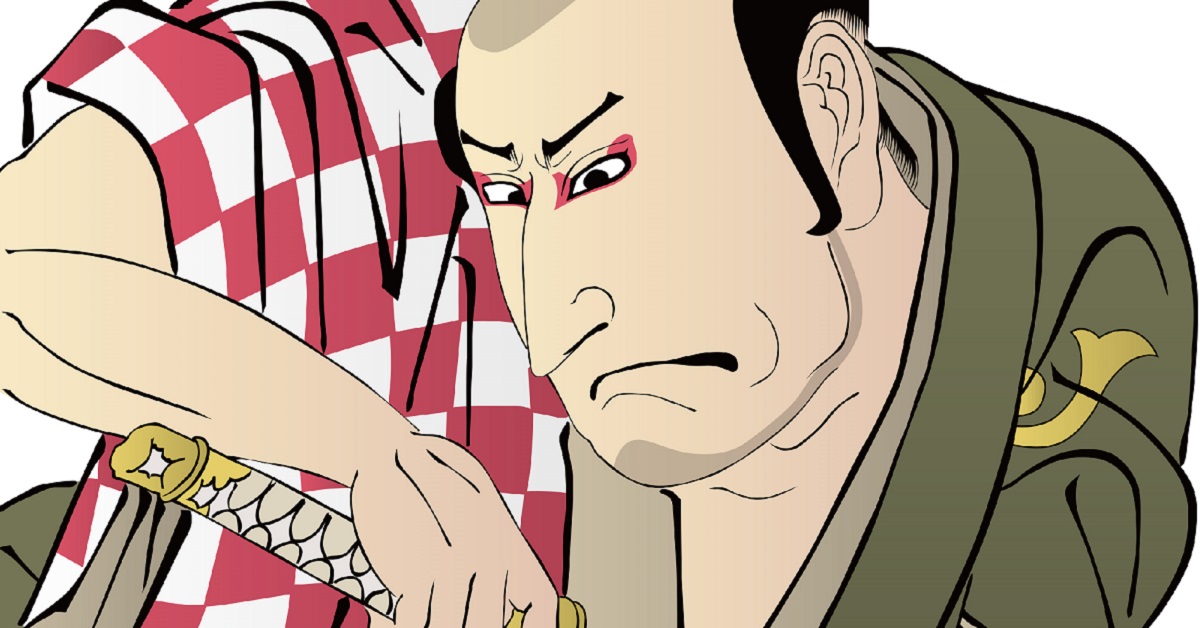Kumadori, the traditional makeup of kabuki actors, uses colors and lines to represent character roles.
Red symbolizes justice and courage, while blue represents evil or vengeful spirits.
This article explains the meaning and appeal of kumadori in a way that is easy for foreigners to understand.
What is Kumadori?
Kumadori is the traditional makeup used in kabuki theater to express a character’s nature and status. The direction and shape of the lines exaggerate muscles or veins, conveying strength and presence on stage. In the Edo period, when theaters lacked sufficient lighting, kumadori made it easier for audiences even in the back rows to understand the role.
It is not merely decoration but a tool for storytelling through visuals. For foreigners, kumadori is a symbol of Japanese culture and a medium that transcends language barriers.
Colors and Their Meanings
The colors used in kumadori symbolize character traits, allowing the audience to understand roles at a glance.
| Color | Meaning | Example Roles |
|---|---|---|
| Red | Justice, Courage, Passion | Hero, Loyal Samurai |
| Blue (Indigo) | Evil, Cruelty, Vengeful Spirit | Villain, Betrayer, Ghost |
| Brown | Non-human beings, Monsters | Oni (demon), Yokai, Spirit |
Red is most commonly used and symbolizes justice and bravery. Blue evokes fear and coldness, highlighting villains. Brown is reserved for supernatural beings, creating a mystical atmosphere on stage.
Types of Kumadori and Their Roles
Not only color but also the shape and placement of lines carry meaning. Here are some representative styles:
| Type of Kumadori | Characteristics | Role Depicted |
|---|---|---|
| Aragoto Style | Bold red lines drawn strongly | Brave warrior, Hero of justice |
| Ghost/Vengeful Spirit Style | Sharp blue lines | Cold villain, Ghost |
| Oni (Demon) Style | Large curved brown lines | Oni, Yokai, Spirit |
| Wagoto Style | Softer, more subtle lines | Graceful, gentle character |
The thickness and angle of the lines directly express character traits. Bold straight lines emphasize strength, while curved lines convey elegance or calmness.
How Audiences Understand Kumadori
Kumadori acts as a visual guide to understanding the story. Even for foreigners, the color and design allow intuitive recognition of roles.
For example, a performer with red kumadori immediately suggests a brave, just hero. By contrast, blue kumadori signals an evil, cold-blooded villain. This is why kabuki can be enjoyed without needing to understand the language.
| Kumadori Color | Impression for the Audience |
|---|---|
| Red | Courage, Strength, Safety |
| Blue | Fear, Coldness, Unease |
| Brown | Awe, Supernatural presence |
Kumadori as a Cultural Experience for Foreigners
For foreign visitors, kumadori is a powerful cultural symbol of Japan. In certain theaters or workshops in Tokyo and Kyoto, tourists can try kumadori makeup themselves and take commemorative photos. This is not only entertainment but also a way to experience Japanese culture firsthand.
The most popular option is painting red kumadori, which lets visitors see themselves as brave samurai or heroic figures. This personal experience deepens cultural understanding and creates unforgettable memories.
| Point of Attraction | Description |
|---|---|
| Visual Impact | Bold colors and strong lines are immediately striking |
| Cultural Experience | Applying the makeup deepens understanding |
| Memorability | Photos and videos capture a lasting memory |
Kumadori in Modern Culture
Kumadori is not limited to traditional kabuki but has influenced modern entertainment worldwide. Movies, anime, and games often adopt kumadori-inspired designs. Heroes may feature red lines symbolizing courage, while villains may have blue lines representing cruelty or darkness.
Additionally, kumadori motifs are used in sports events, festivals, and even face painting. They serve as a visual icon of Japan, instantly recognizable and spreading through photos and media globally.
Conclusion
Kumadori is a makeup style used in kabuki theater to visually communicate roles. Its colors and designs symbolize justice, evil, or supernatural power, allowing even foreign audiences to understand characters intuitively.
Today, kumadori continues to influence tourism, anime, film, and global pop culture. It has become a symbol of Japan that transcends the stage. By focusing on the colors and designs of kumadori during a performance, audiences can gain a much deeper appreciation of kabuki and Japanese tradition.






